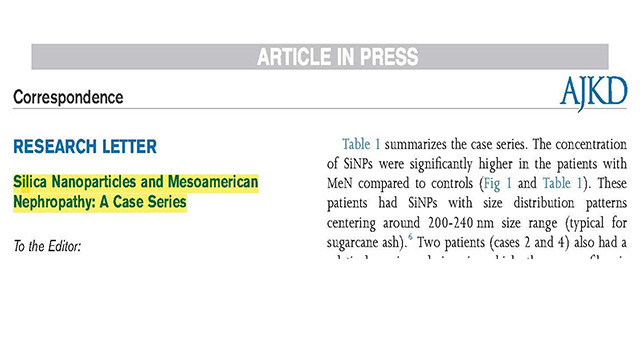Silica Nanoparticles and Mesoamerican Nephropathy: A Case Series
An epidemic of kidney disease has ravaged the Pacific coast of Central America, where it typically affects men working in the sugarcane fields as well as local farmers. A role for heat stress and climate change has been established, but the possibility of a toxin has remained high. Here our group has found that the practice of burning the sugarcane fields, which is often done to make it easier to cut the cane, may have a role in the epidemic. Sugarcane ash contains minute silica nanoparticles that can be inhaled or swallowed, and end up in the kidney where they can cause damage. Laboratory rats given sugarcane ash develop chronic kidney disease. Here, in collaboration with Ricardo Leiva in El Salavador, and Dr Jared Brown at the University of Colorado, we found that silica nanoparticles from sugarcane ash is in the kidneys of subjects with chronic kidney disease of unknown origin. This is the first demonstration of a toxin in the kidneys of these patients. More studies are needed.
Read the article here.
